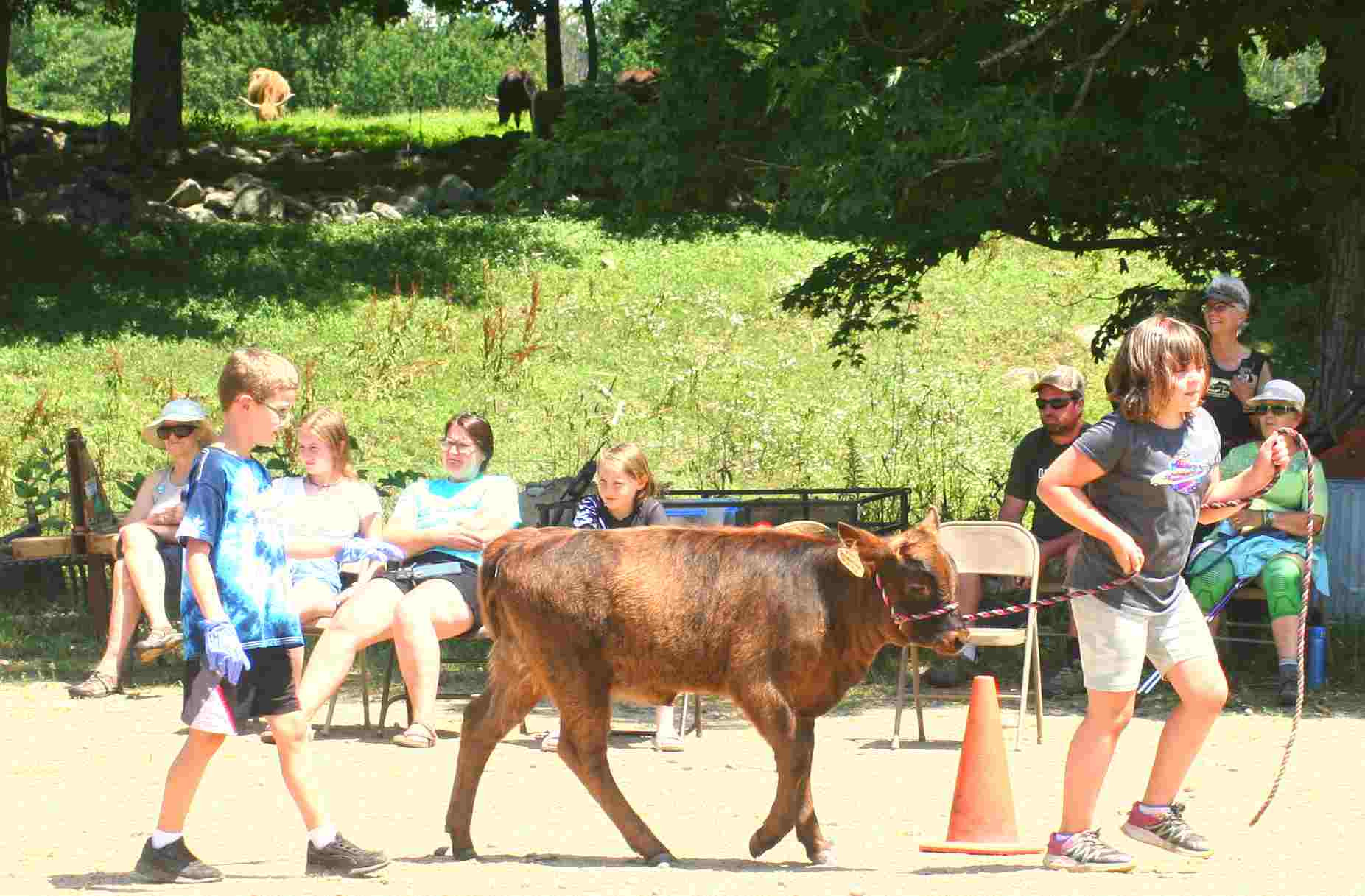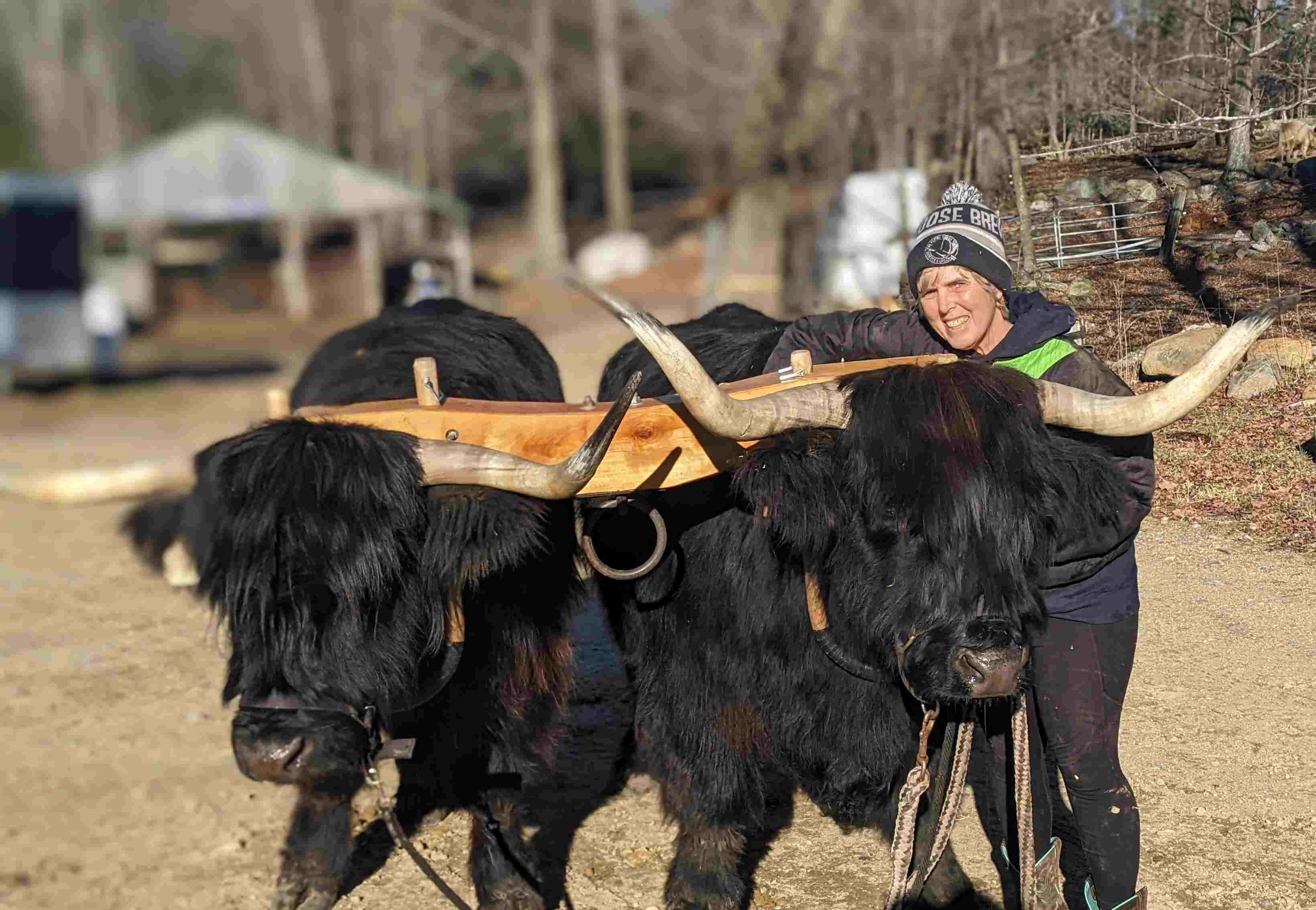What Does It Take?
posted on
October 3, 2022

Eighteen campers (ages 8-15) spent a week in July training, brushing, and cuddling ten calves at the LNF (Learning Networks Foundation) summer Farm Camp. On the last day, parents and friends got to cheer the children as they led their assigned calf in the show ring. Despite running away twice, Buttercup was well behaved and under control as campers Max (left) and Irish led her around the ring.
Buttercup, a 4-month-old half-Scottish Highlander calf, had been a lively participant in our summer camp. For two weeks in July, kids had brushed, bathed, and snuggled with her. A feisty little brindle-colored calf, Buttercup enjoyed the attention, although occasionally she'd get tired of it and run off to her mom, dragging her camper behind.
But as summer ended, her health deteriorated. She'd stand over the tank, her nose inches from the water while the other weanlings gobbled down grain. After a while, Buttercup would wander to a nearby pan and lick up a few morsels of grain with her raspy tongue. Professional attention was called for.
"She's a good weight, and her coat is shiny and bright. How long has she been coughing up that white foam?" asked Dr. Lauren Polanik from the Pembroke Animal Hospital.
"About four weeks," I said.
"This is the darndest thing. She has no fever," Dr. Lauren said. "Maybe it's a mineral deficiency or an allergic reaction."
The vet prescribed vitamin and mineral shots and Banamine, a cow aspirin, to reduce swelling.
For 12 days, I doctored Buttercup. In the morning, I'd find her curled up with her half-sister Butterscotch. Once a day, after her shots, I'd gently squirt milk or electrolytes into her mouth and wait for her to swallow between squirts. At first, she followed me around, nudging me for more, but on the fourth day, she lost interest. She stopped eating, and I could feel her ribs.
What to Do
I put her in the feed bunker, thinking she'd rather be alone. Instead, Buttercup walked to the gate and stood there until I opened it so she could join the other calves. Even as she grew weaker, she wanted to be with her buddies.
I didn't want to give up on this once-lively little calf. I tried to will her to eat, to drink the milk I offered her. On the 12th day, she was dehydrated and could hardly walk. I could either watch her suffer or help her on her way. Filled with sadness, I chose to help her.
After the post-mortem, the vet said, "It was a stricture in her throat. A scar that reduced the opening in her throat to a pinhole. When nursing, milk passed through, but solid food irritated the scar and caused it to close. There was nothing you could have done."
Later I discovered that humans sometimes suffer from the same condition and must be fed through a stomach tube. My choice was the right one.
Every day I grieve the loss of this little girl. Yet each morning, there is Freddie, lined up with Sophie and Autumn and four other calves waiting for breakfast. Twice a day, seven sets of eyes watch me prepare their grain. They crowd around as I fill feed pans. As they eat, I'll run a hand over each calf's back, saying each calf's name.
Life goes on.



